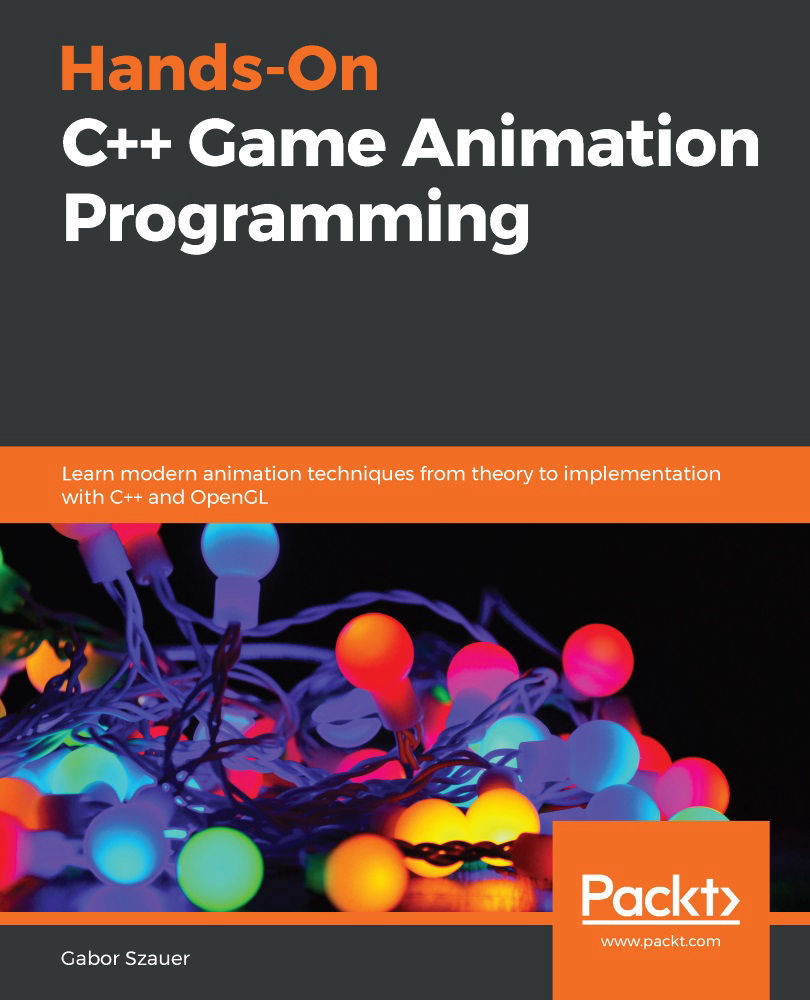Creating the Crowd utility class
In this section, you will be building the Crowd class. This is a utility class that will render large crowds with an easy-to-use API. The Crowd class encapsulates the state of a crowd.
The Crowd class must maintain the instance data of each actor in the class. To accommodate this, you will need to declare a maximum number of actors. Then, all the actor-specific information can be stored in arrays of structures where the index is the actor ID.
Actor-specific data includes the actor's world transform, as well as data related to its animation playback. The animation data is what frames are being interpolated, the interpolation value, and the key times for the current and next frames.
Create a new file called Crowd.h. The Crowd class will be declared in this file. Follow these steps to declare the Crowd class:
- Define the maximum number of crowd actors as
80:#define CROWD_MAX_ACTORS 80
- Start declaring the
Crowdclass by creating...








































































